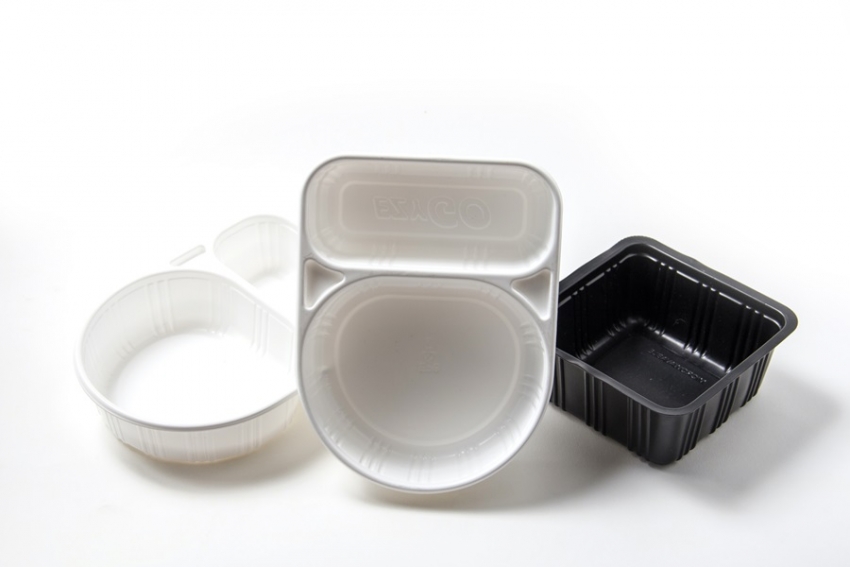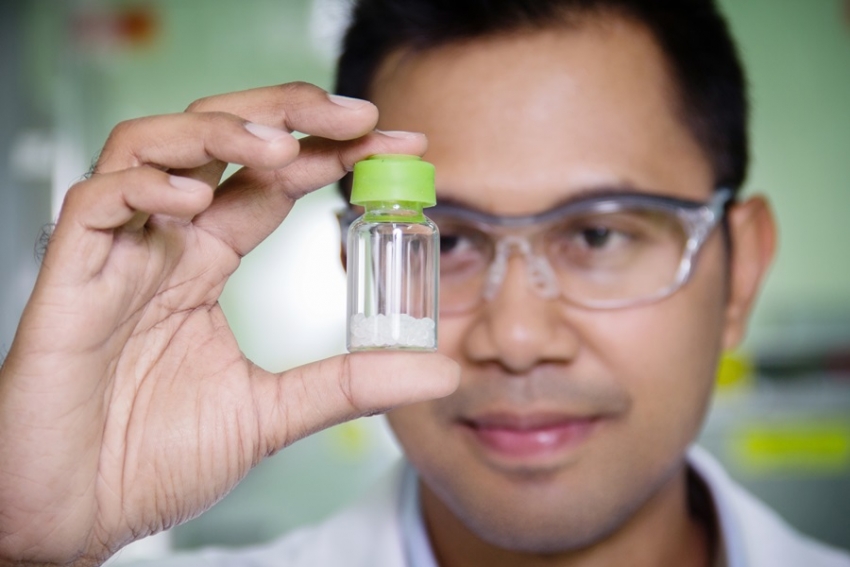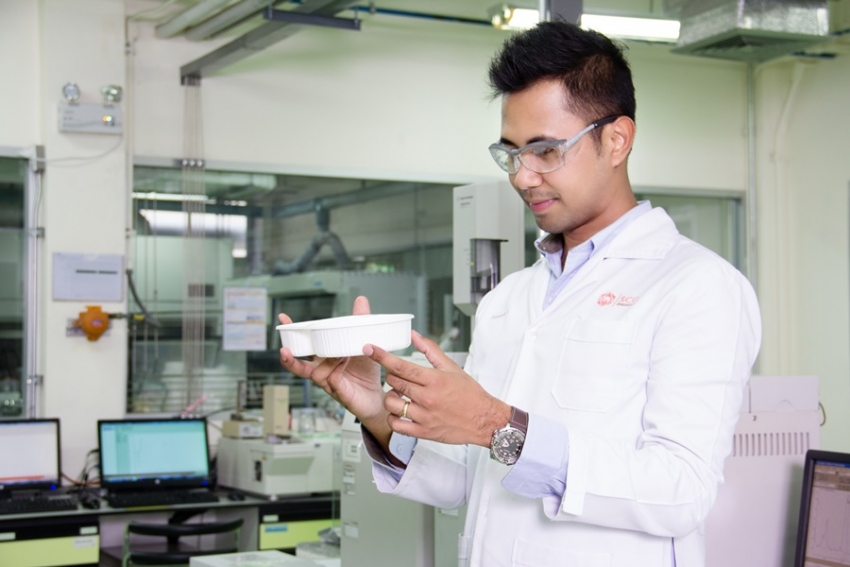Hectic city life where much of the day is spent on traffic or busy office hours often makes it necessary for city dwellers like us to rely on frozen ready meal from convenience stores. Just a few minutes in a microwave, and we have a tasty and satisfying meal.
But you probably wonder if those frozen ready meals are as nutritious as freshly-cooked meals, and whether they remain free from contaminants when microwaved in their plastic packages.
To find out if frozen, ready meals are truly safe, we need to look at what frozen food packaging is made of. And no one would be able to give us a better answer than a manufacturer of the plastic resin used in the production of frozen food packaging itself.
In response to our questions, SCG Chemicals provided us with information about the development of plastic resin for food packaging manufacturing. We learned that nowadays there are a wide variety of plastic resins, and each has its own unique property, especially when it comes to consumers’ health. Forinstance, Polyester (PET) is suitable for transparent containers like bottles for drinking water, carbonated drinks, and vegetable oil, while Polyethylene (PE), with its low melting point and affordability, is used in the manufacturing of various other types of containers. However, a plastic resin with extra special properties is required for the manufacturing of frozen food containers. In terms of use, this type of plastic needs to be able to withstand extremely low and extremely high temperatures from ‘Freeze to Heat’ without melting, deforming, collapsing or breaking. It also has to be resistant to impact during transportation and not absorb nutrients, odors or food ingredients as well as not cause the foods to lose their taste or nutritional value. Most importantly, it must be safe for the consumers’ health. Finally, it must also be able to be easily disposed of after use.
Meeting all of these requirements may seem insurmountable, but are in fact seen as challenges by the team of researchers at SCG Chemicals who have striven to develop plastic resins to respond to every need. The result has been the innovation of P348S
plastic resin that can be “instantly” put through a Thermoforming process to shaped into a food container, making the manufacturing process of food containers more convenient and less time-consuming. The products will also be of consistent quality and thus minimize loss or damage during production.
Containers made from P348S have also been specially designed for Asian foods which are sweet and oily due to use of high amounts of coconut milk, cooking oil and sugar. This results in a higher boiling point when the food is heated, requiring that the container be able to withstand very high temperatures. P348S plastic is the solution as it can withstand temperatures of up to 130 degrees Celsius and as low as -40 degrees Celsius. At this extremely low temperature, liquid in the food freezes instantly and forms fine and tiny ice crystals, making it possible for nutritional preservation as well as the texture and taste of the foods is preserved as good as the freshly cooked meal. P348S thus has the appropriate properties for ‘Freeze to Heat’ or for “extremely low to extremely high” temperatures.
Most importantly, P348S is certified by local and international food safety institutes which are EU Food Contact Regulation No. 10/2011, Specific Migration of Simulant, Thailand Food Contact: TIS 656 or Notification No. 295, FDA 21 CFR 177.1520, and Packaging & Packaging Waste Directive (Directive 94/62/EC), which ensure the product’s safety for consumers’ health. Now that we know that the containers are completely safe as they are made from plastic resin with the required properties, let’s look at the process of frozen food manufacturing before it reaches consumers.
The freezing process starts from putting freshly-cooked food into plastic containers—bowls and trays, before flash-freezing them. This is a very effective method of food preservation in which the nutritional value of the food is retained and at the same time the texture and appearance of the food remain fresh and enticing. After that, the frozen meals are stacked and transported to the stores; while the temperature is kept at -20 degrees Celsius. The containers will be stored in refrigerators/freezers, and heated in a microwave at a high temperature for customers who wish to eat them right after they make a purchase. We can see that the frozen ready meals have to go through various production processes before they get to consumers. The containers have to withstand extremely cold temperatures so that when they are stacked in subzero temperature conditions during transportation, they will not become brittle and break. And once the containers are heated to extremely high temperatures in a microwave, they will not melt or deform, thus ensuring safe and tasty meals for the consumers.
With advancements in frozen food container development to suit modern food preparation technology and the changing lifestyle of consumers, while also maintaining a focus consumer safety, we can rest assured that we are going to enjoy a safe and delicious meal every time we heat a frozen ready meal.
For more information about P348S please visit
https://www.scgchemicals.com/en/products-services/product-type/pp/pp-block-copolymer







